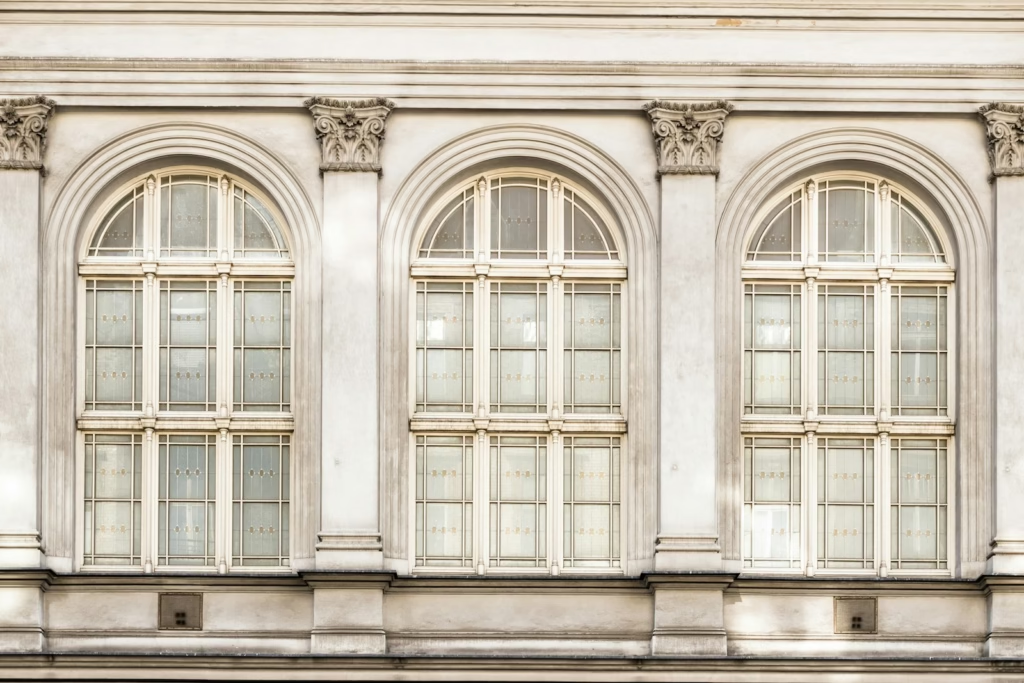Doors and windows are essential components of any building, and their fixtures and fastenings play a crucial role in enhancing functionality, security, and convenience. From the hinges that allow smooth rotation to the locks that safeguard our spaces, these fittings ensure the ease of operation and protection we often take for granted. This article delves into the various types of fixtures and fastenings available for doors and windows, providing insight into their functions and applications.

Types of Fixtures and Fastenings
1. Hinges
Hinges are vital fixtures that enable doors and windows to rotate freely along their axis. Depending on the type of door or window and its intended purpose, different hinges are available:
- Butt Hinge
The most common hinge type, butt hinges are made of cast iron or steel and consist of two flanges. One flange is affixed to the door or window, while the other is attached to the frame, ensuring a secure and durable connection. - Back Flap Hinge
Similar to butt hinges but designed for thin doors, back flap hinges have wider flanges. These are fixed to the back side of the door and frame, offering additional stability. - Counter Flap Hinge
These hinges have two centers, allowing them to fold back onto themselves. They are ideal for situations requiring compact storage or movement. - Parliamentary Hinge
Used in narrow openings, parliamentary hinges create extra space for movement and minimize obstruction. They are particularly useful when moving large furniture through small doorways. - Spring Hinge
Commonly used for swinging doors, spring hinges incorporate a spring mechanism that automatically closes the door. They are available as single-acting or double-acting hinges. - Rising Butt Hinge
Designed for doors in carpeted rooms, these hinges incorporate a helical nickel joint that raises the door vertically when opened, preventing it from dragging on the carpet. - Garnet Hinge
Garnet hinges feature two distinct components: a long arm-shaped hinge for the door and a plate-shaped hinge for the frame. These are typically used for battened or ledged doors. - Strap Hinge
With two long arm-shaped flanges, strap hinges are commonly employed for battened and ledged doors and windows. - Pin Hinge
Pin hinges consist of two flanges joined by a removable pin. This design allows easy separation of the door and frame, making them ideal for heavy doors. - Nar-Madi Hinge
Used for heavy doors, this hinge has a single flange fixed to the door. The pin is attached to the frame and can be removed as needed.
2. Bolts
Bolts are crucial for ensuring the security of doors and windows. They provide a simple yet effective locking mechanism. Various types of bolts include:
- Hook and Eye Type Bolt
This bolt is designed to hold window shutters in place when opened. The hook is attached to the shutter frame, while the eye is fixed to the window rail. - Flush Bolt
Flush bolts are embedded into the door surface, keeping the bolt flush with the door face for a seamless look and operation. - Aldrop Bolt
A traditional bolt type, aldrops require a padlock for secure locking. They remain one of the most commonly used bolts. - Barrel Bolt
Used for the back faces of doors, barrel bolts consist of a socket fixed to the frame and a plate fixed to the door. This simple mechanism ensures reliable security. - Espagnalette Bolt
Ideal for high-security doors and casement windows, espagnalette bolts are designed for hard-to-reach areas, offering enhanced protection. - Hasp and Staple Bolt
Similar to the aldrop bolt, this type also requires a padlock for security. The hasp is attached to the door or window, while the staple is fixed to the frame.
3. Handles
Handles serve the dual purpose of aiding in the operation of doors and windows while enhancing their aesthetic appeal. Available in various designs, handles can cater to different functional and decorative needs. Common types include:
- Bow type
- Lever handle
- Door handle
- Wardrobe handle
4. Locks
Locks are essential for securing doors and windows, with numerous varieties to suit different needs:
- Padlock: A portable lock that can be used with aldrop or hasp and staple bolts.
- Mortise Lock: Fitted within the door, offering a sophisticated locking mechanism.
- Rim Lock: Mounted on the surface of the door, providing reliable security.
- Cupboard Lock: Specifically designed for cabinets and cupboards.
- Lever Handle Lock: Combines a handle and locking mechanism for ease of use.
Conclusion
Fixtures and fastenings are integral to the functionality and security of doors and windows. From hinges that allow smooth rotation to bolts and locks that ensure safety, these components are indispensable. Choosing the right type of fixture depends on the door or window design, its intended use, and the level of security required. By selecting suitable fittings, one can enhance both the practicality and aesthetic appeal of their living or working spaces.
